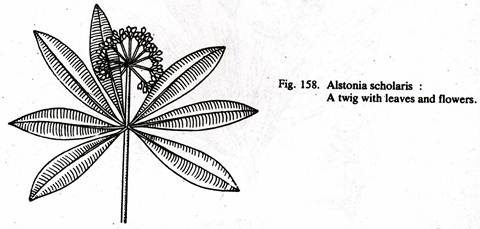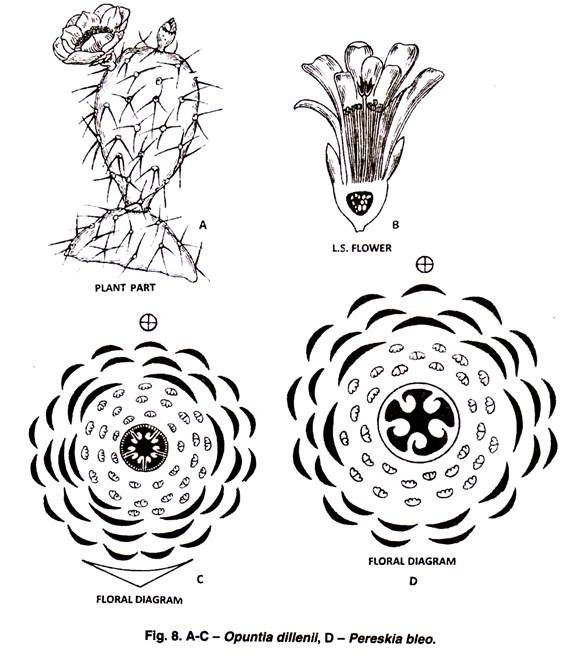ADVERTISEMENTS:
In this article we will discuss about the classification of pteridophytes.
The term Pteridophyta was first coined by Haeckel. Eichler (1883) divided the plant kingdom into Cryptogamia and Phanerogamia. The Cryptogamia was further divided into Thallophyta. Bryophyta and Pteridophyta. Engler (1909) included the Bryophyta and Pteridophyta under Embryophyta.
Due to discovery of the fossil plants, the classification of Pteridophytes has undergone vast changes in the recent past. Older taxonomists divided the vascular plants in two divisions—Pteridophyta (primitive vascular plants with absence of seeds) and spermatophyta (presence of seeds).
ADVERTISEMENTS:
However, this distinction became invalid due to the discovery of seed bearing fossil plants (Cycadofilicales). Sinnott (1935), therefore, introduced a new term Tracheophyta for a division which possess sporophyte with a well-developed vascular tissue.
Arthur J. Eames (1936) classified Tracheophyta into following four groups on the basis of nature and relation of leaf and stem vascular anatomy and position of sporangia:
Tippo (1942) called the ‘groups’ of Eames as sub-phylum. Wardlaw (1955) gave them the rank of sub-division.
ADVERTISEMENTS:
According to recommendations of I.C.B.N. (1952), the name of the division should end in the suffix-phyta, of a sub-division in-phytina and a class in -opsida.
On this basis Wardlaw (1955) divided the Pteridophytes into four divisions:
(1) Psilopsida:
Sub-division Psilopsida (according to Wardlaw, 1955) or Division Psilophyta (according to Smith. 1955) includes living (Order Psilotales e.g., Psilotum), as well as fossil plants (Order Psilophytales e.g., Rhynia).
(ii) The members are sporophytic.
(iii) Roots are absent.
(iv) The organization of the plant body of the members is very simple. It is differentiated into a subterranean (underground) rhizome and an erect aerial portion.
(v) Rhizome bears tufts of unicellular Rhizoids.
ADVERTISEMENTS:
(vi) Aerial portion is sparingly or profusely branched. The branching is usually of dichotomous type.
(vii) Aerial axis may be leafless or sometimes may bear scaly appendages (e.g., Psilotum) or large foliage leaves (e.g., Tmesipteris)
(viii) The vascular tissue is of primitive type i.e., simple, cylindrical protostele with annular or spiral racheids.
(ix) The reproductive organs are in the form of sac like sporangia.
ADVERTISEMENTS:
(x) Sporangia are borne at the apex of the aerial shoots. They are either solitary (e.g., Rhynia) or in groups and terminal in position. There was nothing like that of sporophyll.
(xi) Sporangia always bearing the same type of spores i.e., they are homosporous.
(xii) The gametophyte is known only in Psilotum and Tmesipteris (living genera) while unknown in Psilophytales.
(xiii) The gametophyte is cylindrical or branched, subterranean and colourless.
ADVERTISEMENTS:
(xiv) Sex organs are partially embedded in the prothallus.
(xv) Antherozoids are multiciliate in Psilotales.
(2) Lycopsida:
ADVERTISEMENTS:
(i) It includes both fossil (e.g., Lepidodendron) and living Pteridophytes (five living genera e.g., lycopodium, Phylloglossum, Isoetes, Stylites and Selaginella).
(ii) Its history indicates that these Pteridophytes developed during the Devonian period of the Palaeozoic era.
(iii) The plant body is sporophytic and can be differentiated into root, stem and leaves.
(iv) The leaves are small (microphyllous), simple with a single mid vein.
(v) They are usually spirally arranged, sometimes in opposite fashion and or even in whorls.
(vi) In some cases the leaves are ligulate (e.g., Selaginella, Isoetes). The ligule is present at the base of each leaf.
ADVERTISEMENTS:
(vii) The vascular tissue may be either in the form of plectostele, siphonostele or sometimes even polystele.
(viii) Leaf gaps are absent.
(ix) Sporangia are quite large in size and develop on the adaxial surface of the leaves (sporophylls).
(x) Sporophylls are loosely arranged and form strobilus.
(xi) Some members are homosporous (e.g., Lycopodium) while others are heterosporous (e.g., Selaginella).
(xii) Antherozoids are biflagellate or multiflagellate.
ADVERTISEMENTS:
(xiii) Gametophytes which are in the form of prothalli are formed by the germination of spores.
(xiv) Heterosporous forms have endoscopic gametophytes while in homosporous forms the gametophyte is exoscopic.
(3) Sphenopsida:
(i) It includes both fossil plants (e.g., Calamophyton, Sphenophyllum) as well as living plants (e.g., Equisetum). It is represented by one living genus Equisetum and 18 fossil forms.
(ii) These Pteridophytes evolved during the Carboniferous period of the Palaeozoic era.
(iii) The plant body is sporophytic and can be differentiated into root, stem and leaves.
(iv) The stem in majority of the forms is long, jointed or articulated and is ribbed i.e., having ridges and grooves.
(v) Stem is divisible into nodes and internodes and is developed as upright aerial branches from the underground creeping rhizome.
(vi) Leaves are thin, small, scaly brown and are arranged in transverse whorls on the nodes of the aerial branches.
(vii) Branches also develop in whorls from the axil of the scaly leaves.
(viii) As the foliage leaves are reduced to scales, the process of photosynthesis is taken up by the stem and hence it becomes green.
(ix) The stem has a solid protostele (e.g., Sphenophyllum) or medullated protostele (e.g., Equisetum).
(x) Secondary thickenings were observed in some extinct forms (e.g., Sphenophyllum).
(xi) Sporangia are developed at the apex of the fertile branches in whorls forming compact cone.
(xii) Living members are homosporous but some fossil forms are heterosporous (e.g., Catamites).
(xiii) Spores germinate to give rise to gametophytes (prothalli) which may be monoecious or dioecious.
(xiv) Antherozoids are large and multiflagellate.
(xv) Embryo is without suspensor.
(4) Pteropsida:
(i) This sub-division includes the plants which are commonly known as ‘ferns’. It is represented by about 300 genera and more than 10000 species.
(ii) These Pteridophytes were originated during the Devonian period.
(iii) They occur in all types of habitats. Majority of the ferns are terrestrial and prefer to grow in moist and shady places. Some are aquatic (e.g., Azolla, Salvinia, Marsilea), xerophytic (e.g., Adiantum emarginatum), epiphytic (e.g., Asplenium nidus), halophytic (e.g., Acrostichum aureum) or climbing (e.g., Stenochlaena).
(iv) Some members are very small while some members are tall tree like (e.g., Angiopteris).
ADVERTISEMENTS:
(v) Majority of the members (except some tree ferns e.g., Angiopteris) have short and stout rhizome. The rhizome may be creeping, upright or growing above the soil.
(vi) Leaves are large, may be simple (e.g., Ophioglossum) or compound (majority of the ferns for example, Pteridium, Marsilea, Adiantum etc.) and described as fronds.
(vii) Young fronds are circinately coiled.
(viii) Leaves are exstipulate (e.g., Filicales) while stipulate in some other groups.
(ix) The vascular cylinder varies from a protosete to a complicated type of siphonostele.
(x) Vegetative reproduction takes place by fragmentation (e.g., Adiantum, Pteridium), stem tubers e.g., Marsilea), adventitious buds (e.g., Asplenium bulbiferum) or by apogamy (e.g., Marsilea).
(xi) Sporangia arise from placenta (a swollen cushion of cells) in groups (sori).
(xii) Sori develop on the margins or abaxial surface of the leaves (sporophylls) or leaflets.
(xiii) Sori are protected by true (e.g., Marsilea) or false indusia (e.g., Adiantum, Pteris).
(xiv) The sporangial development may be leptosporangiate (e.g., Osmunda) or eusporangiate type e.g., Ophioglossum).
(xv) The sporangia in most cases have a distinct annulus and stomium.
(xvi) Members may be homosporous (e.g., Pteris, Adiantum etc.) or heterosporous (e.g., Marsilea, Regnellidium, Azolla, Salvinia etc.)
(xvii) Spores on germination form autotrophic prothalli (gametophyte).
(xviii) Antheridia and archegonia are partially or completely embedded in the gametophyte.
(xix) Embryo may or may not have suspensor.


